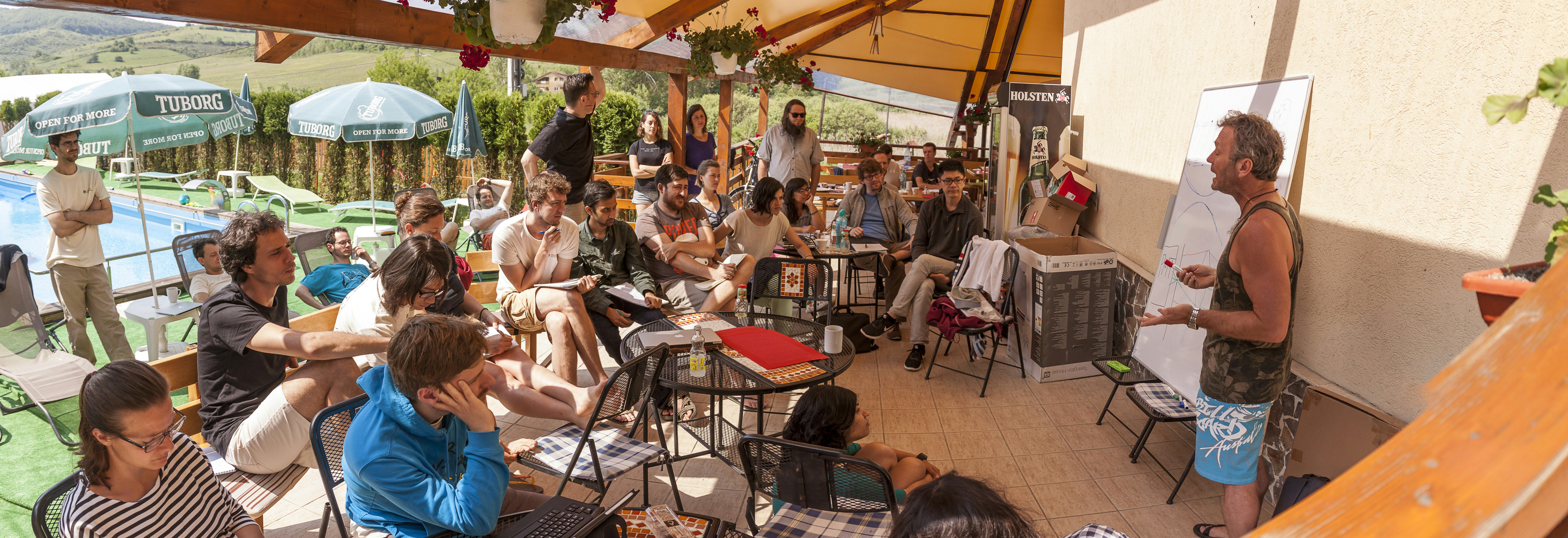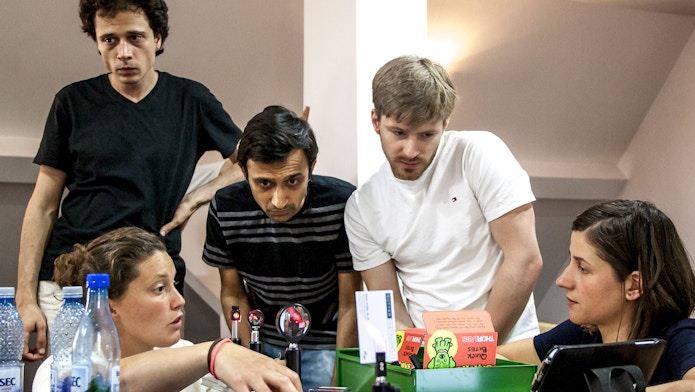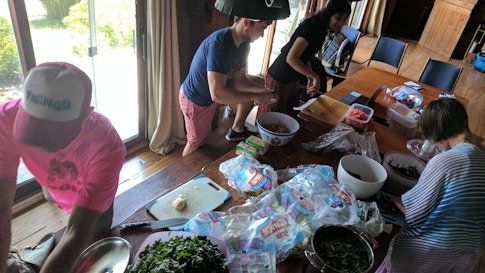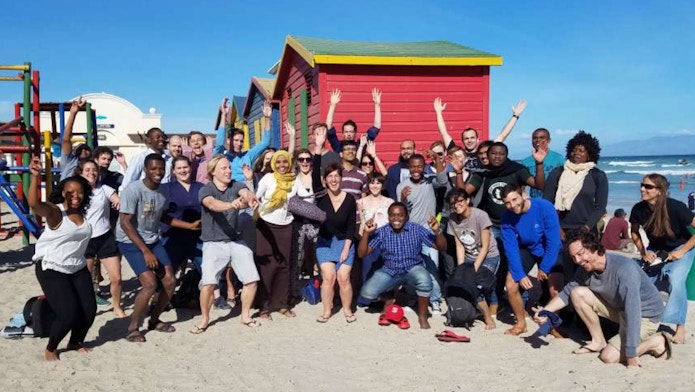
Teaching Computational Neuroscience Across the Globe
Every summer for the last five years, Florin Albeanu, a neuroscientist at Cold Spring Harbor Laboratory in New York, has temporarily transformed a small hotel in rural Transylvania into a full-service neuroscience lab. The bucolic lakeside site is the home of the Transylvanian Experimental Neuroscience Summer School (TENSS), a three-week course designed to teach students from around the world to build and use sophisticated neuroscience tools from the ground up. Competition for entry is fierce. This year, 140 students applied for just 12 to 14 positions.

Albeanu launched the course, with fellow neuroscientists Raul Muresan and Adam Kampff, because he wanted graduate students and postdocs who didn’t have access to expensive equipment to learn to build their own. The course is focused on the newest optical and electrophysiological methods and behavioral readouts to study the connectivity and function of neuronal circuits. “Technology in neuroscience is moving so fast that it can be scary — we want students to realize they shouldn’t be afraid of it,” Albeanu says. “We want people to go back to their own labs and realize they can do this even without a lot of funding.”
Albeanu chose the location, his native Romania, in part because it had little neuroscience infrastructure, meaning students would truly learn to build these tools from scratch. The course organizers bring everything they need to the hotel, a logistical challenge in itself. “The goal is to show students that they can build this technology in a pension [small hotel] in Romania in three to four days very cheaply,” Albeanu says.
TENSS is one of a number of neuroscience summer schools across the globe, from Cape Cod to South Africa to China, supported in part by SCGB. “The main mission of the SCGB is to innovate and apply the latest methods in large-scale neural recording and statistical analysis to answer fundamental questions about the relationship of neural coding and dynamics to cognition,” says David Tank, SCGB’s director. “We enthusiastically support these courses because they provide an excellent way to both disseminate the new technologies and train the next generation of investigators, thus enhancing the impact of our program.” Funding courses in diverse locations brings this kind of training to people who might otherwise not have access.
The need for this kind of training has become more intense as researchers develop new techniques for tracking hundreds of cells, which produces reams of data that are often difficult to analyze.
Courses
-
China: Computational and Cognitive Neuroscience (CCN) Summer School -
Friday Harbor, Washington: Summer Workshop on the Dynamic Brain -
Israel/Palestine: Loewenstein NeuroBridges School of Computational Neuroscience -
Romania: Transylvanian Experimental Neuroscience Summer School (TENSS) -
South Africa: IBRO-Simons Computational Neuroscience Imbizo -
Woods Hole, Massachusetts: Methods in Computational Neuroscience


SCGB also supports Methods in Computational Neuroscience (MCN), a summer program at the Marine Biological Laboratory (MBL) in Woods Hole. The two programs share a common goal, “to bring together theoretical and experimental approaches to solve fundamental, mechanistic questions about how the brain performs a myriad of functions,” says Mark Goldman, a neuroscientist at the University of California, Davis and an SCGB investigator who just finished a five-year stint as the course co-director. “The SCGB does this through assembling teams of theorists and experimentalists working together on such problems. The MCN course parallels this structure by assembling an equal mix of theorists and experimentalists who each learn the skills critical to participating at the highest level in such collaborations. Those coming from a more experimental neurobiological background learn core computational and theoretical neuroscience approaches. Those coming from theoretical backgrounds in fields such as math, physics and computer science learn about fundamental problems in neuroscience to which they can apply their skills.”
Goldman and MCN course co-director Michale Fee, also a SCGB investigator, outline the most critical needs for computational neuroscience education in a review published in Current Opinion in Neurobiology in October.
Goldman says the makeup of the MBL course has evolved with the field — organizers used to accept half computational and half experimental participants. Now, about a third of the students have a computational background, a third an experimental background and a third have both, reflecting the gradual merger of the two disciplines in neuroscience. The instructor lineup rivals that of most conferences, giving students access to the leaders in the field. Videos of the lectures and accompanying slide presentations are available freely online.
One of the newest additions to the cadre of computational neuroscience courses is the IBRO-Simons Computational Neuroscience Imbizo, in Cape Town, South Africa. (Imbizo is a Xhosa word meaning a gathering to share knowledge.) The three-week course, directed by Tim Vogels of Oxford University, Peter Latham of University College London and Joseph Raimondo of the University of Capetown, is aimed primarily at the African neuroscience community. “We want to help push African neuroscience onto the world stage,” Vogels says, as well as boost diversity in neuroscience. Last year, they hosted 20 African and 10 international students.
Vogels says they have a practical rationale for focusing on computational neuroscience. Expensive equipment is out of reach for many labs in Africa. But students often have strong training in mathematics and engineering. Given the right training, all they need to launch a computational neuroscience project is a computer, Vogels says. “We want to help accelerate that part of the field.

Just two years in, Vogels says students are already seeing the benefits of the course, launching transcontinental collaborations and applying for graduate programs that might otherwise have been out of reach. One of the students won a research contest that provides funds to go to the Neural Information Processing Systems (NIPS) conference in Los Angeles in December and another moved to Germany for a one-year Ph.D. preparatory program in computational neuroscience.
The goal for all the courses is to help spur training beyond the students who attend. “Ideally, we want everyone to get this kind of training at their home institution,” Goldman says. “We’re not there yet in terms of getting the whole field to adopt the need for computational training.”


